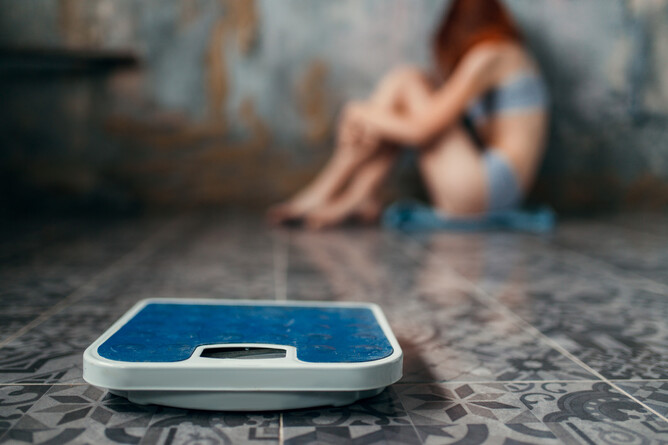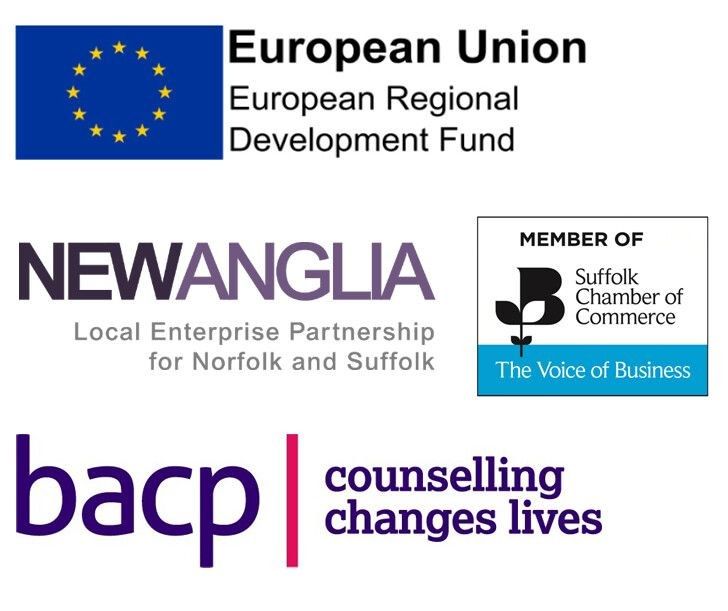Although a culture encouraging self-love and body acceptance is sweeping the nation, many of us find the idea difficult to practice or even comprehend. Why do we find it so hard to love our bodies. Acknowledging the psychological harm that has already been inflicted by an inherently toxic society may shed light onto some of the deeply ingrained thoughts and feelings we have been taught about our bodies. This blog will be looking at the effects of body dysmorphia, bodies in the media, toxic beauty concepts and fatphobia to explain why we may feel this way.
Body dysmorphia or body dysmorphic disorder (BDD) is a mental health condition described by the NHS as one which consumes a person’s time worrying about the flaws in their appearance that are often unnoticeable by others. A person experiencing body dysmorphia is not necessarily concerned with appearing conventionally beautiful or attractive, instead they may feel great anxiety that their body will judged by others or persecuted for looking a certain way. They may try to hide their body in baggy clothes, refuse to leave the house or make drastic changes to their diet when at their worst. Body dysmorphia can be influenced by a persons self-esteem, what they eat or how they are feeling in general, dieting and gender dysphoria can also have a great impact.
Even without a diagnosis, one can view their appearance in a very critical and irrational way, concentrating negativity on specific parts of the body. This level of attention to such minor physicality’s can actually skew perceptions into creating and exaggerating fictional flaws that are then obsessed over. The more attention given to these flaws, the worse the flaws appear.
Bodies in the Media
Although debated amongst experts about its contribution to BDD, the media and photoshop have at least a partial influence on our own self confidence and body perceptions. Being regularly exposed to the imagery of unrealistic bodies and lifestyles on social media can create an expectation in one’s self about how life should be led and how bodies should look; comparing ones own body to such unrealistic expectations can cause feelings of failure, rejection, embarrassment, shame and anxiety.
Even when viewing bodies in media like cartoons, shape and size play a large part in each characters identity (princesses are often slim built with tiny waists, larger bodies are often only portrayed in undesirable or evil characters) and so send a message to their young viewers. Growing up with the subliminal message that small bodies are omnipotently good and that larger bodies are the source of all that is evil or undesirable becomes ingrained into children and young adults who then become insecure about their bodily presence.
Taking things one step further, the bodies of those that are not even human are also portrayed in an abstract way that is important to note. As technology has progressed, the demand for more visually appealing produce has led to the genetic modification of fruit and vegetables (for example, bananas are made to curl, and carrots are made to be straight) and the degradation of their naturally occurring appearance. By separating off and labelling naturally occurring fruit and vegetables as ‘wonky’ this plies that they are abnormal and unsightly even when the nutritional content is identical. Using this as a metaphor, one can start to see why deep-rooted feelings of shame and embarrassment are attached to bodies.
Toxic Beauty Concepts
Bodies in the media are also heavily influenced by the concept of beauty however this is an extremely broad topic encompassing numerous theories and structures, here we will focus on evolutionary psychology and the capitalisation of the beauty industry.
Beauty is a human construct created from the psychological pleasure delivered by the presence of symmetry and desirable traits in evolutionary sexual selection. The theory that ‘early man’ searched for and selected their mate based off of specific physical bodily qualities was proposed by Charles Darwin in 1859 but is still a relevant topic today. Because women could only bare approximately one child at a time, they had to be picky about their choice in partner seeking a man who would be strong enough to hunt for and protect herself and the child sought value in physical qualities like muscular build. Men having the ability to produce more offspring at any given time however, sought fertile women with wide hips and large breasts (to bare and feed children), healthy hair, bright eyes, rosy lips and cheeks (giving the appearance of health and good blood circulation). The ingrained psychology behind these traits may not appear at the forefront of one’s mind but the desire for these physical traits have stayed with us though history.
Through time however, humans have changed a lot. Our main purpose is no longer to reproduce and the acknowledgment of LGBTQ+ relations are not considered in this theory although society still clings to these archaic gender roles, identities, and appearance. Understanding that the desire for these physical qualities is outdated and no longer relevant may help empower one to no longer conform in the presentation of societal beauty based on the preferences of cavepeople.
Focusing now on the capitalisation of the beauty industry, dominated by rich upper-class individuals who have manipulated and profited off of their own archaic and unrealistic ideologies of what makes a body beautiful. Not only has beauty been sculpted in this way for sexual gratification, it has also been marketed in a way to generate ridiculously large profits. The makeup, fashion and diet industry profit form the reinforcement of unrealistic beauty standards made to feel more attainable through the purchasing of their products. Promoting the idea that beauty is only attainable to the hyper feminised, hyper masculinised and hyper-sexualised allows product marketing an easy way to sell beauty enhancing products to a population with a low self-esteem created by the unrealistic beauty standards promoted in the products they are consuming.
Diet companies also make billions of pounds every year from selling flawed diets designed to engage the consumer in an addictive ‘yo-yo’ cycle of unsustainable weight loss and natural weight gain. Delving deeper into this, if the products they sold were actually effective in facilitating weight loss, buyers would only need a one-off purchase to achieve their desired goals; much more money is made when the buyer has to consume multiple weight loss products, especially when they become stuck in the cycle.
In developing an understanding that the capitalisation of beauty was solely created to help the rich get richer and poor poorer, we can start to perceive the bodily ideologies sold to us differently.
Fatphobia
The capitalisation of beauty and the diet industry also focus heavily on enforcing a fatphobic society; what was once a symbol of health, power, beauty and wealth, fat bodies are now ridiculed and forced to change or feel ashamed. Although the term ‘fat’ in its origins is a completely neutral description about the insulating adipose tissue that warms and protects the body, it has now become attached to feelings like fear and disgust. As previously stated, the media and beauty industry are largely responsible in the evolution of how we see fat, but this does not mean the term ‘fat’ cannot be reclaimed. Fat is the description of an appearance and does not determine a persons’ worth, to be fat is acceptable, valid and okay. Understanding our inherited unconscious fatphobic beliefs is the first step to unlearning them.
To live life without the fear of being or becoming fat means that one can concentrate on the parts of life that really matter, and once one person can live life having or being fat unapologetically, many will harbour the courage to follow. This is by no means ‘promoting obesity’ but instead is allowing people to exist in their own bodies without scrutiny or shame.
In understanding the origins behind one’s thoughts, feelings and emotions connected to their body image and personal barriers, the prevention in feeling comfortable in their own skin can be empathised with, recognising people can be recalling a possible lifetime’s worth of negative messages and manipulation or a single traumatic event or moment rooted from some or all of the negative influences highlighted in this blog.
This insight perhaps shows why it is not so simple for all to just ‘accept and love their body’ and some will have personal and influenced barriers to overcome, before feeling comfortable with their selves and the body they were born in and with. We sometimes need some additional support in overcoming these and defending against negative perceptions from the media, unrealistic beauty standards in general and the likes of fatphobia.

